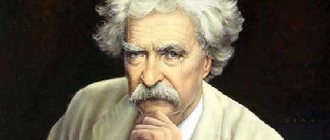Every person has the ability to hypnotize themselves. We rarely think about it, but in everyday life, many people use self-hypnosis very often. Experts have come to the conclusion that there is no suggestion from the outside. There is only self-hypnosis, which underlies both self-hypnosis and hypnosis.
Autogenic training is closely related to conscious self-hypnosis. For the first time, the famous German psychiatrist Johann Schultz spoke about autogenic training. This happened in 1932.
Recently, autogenic training according to Schultz, which over time became a classic, has again begun to arouse interest among many people. What is autogenic training according to Schultz and what is its meaning? Today we will look at these and many other questions regarding autogenic training, invented by Johann Schulz.
What is autogenic training?
This is a special method that allows you to independently enter the autogenic state, as well as exit it, and is used to normalize physiological and psychological processes.
The autogenic training method was proposed by Schultz, who, in the course of scientific research, analyzed the stories of people who had gone through hypnosis. Numerous experiments allowed him to reveal that in a hypnotic state a person feels the spread of heat throughout the body, heaviness in the arms and legs against the background of muscle relaxation.
Autogenic training and relaxation are aimed at enhancing these sensations. Schultz proposed a method that allows one to induce a physiological shift by passively concentrating on emerging sensations.
Those who have completed autogenic training courses are able to balance mental processes, relieve physical stress and quickly restore their strength. After such exercises, it becomes possible to control blood circulation, the work of the heart and the respiratory system.
What can you do with Autotraining?
We will use this technique for another very important purpose; to change negative attitudes. Read what negative attitudes are here.
Below I give you a simplified and shortened description of the technique.
Here's what you can do after mastering AT:
- Calm down, effectively relieve physical and mental stress. This is of great importance for the prevention of fatigue, neuroses and psychosomatic diseases.
- Take a quick rest. Restoring strength in an autogenic state is much faster than during sleep, simply lying down, watching TV or listening to music.
- Independently regulate body functions such as blood circulation, heart rate and breathing, blood supply to the brain, which is very important for the treatment of psychosomatic diseases.
- Fight the pain.
- Activate mental and physical functions, for example, attention, memory, imagination, ability to exercise.
- Activate creative resources through the development of intuition and imaginative thinking.
- Defeat bad habits by rationally combating stress, emotional and intellectual activation.
- Know yourself deeply. Ancient sages and doctors considered deep self-knowledge to be a condition for health and personal development.
Goals and objectives of auto-training
Relaxation and autogenic training are effective for various nervous disorders, psychosomatic diseases, for getting rid of bad habits and changing personal character traits.
The main goals of AT:
- Improve health conditions.
- Increase vitality and performance.
- Self-education.
- Anxiety decreases.
- The ability to control emotional states increases.
- There is a harmonization of body functions.
- The intensity of the pain syndrome decreases.
- Strength is restored.
- The process of falling asleep is normalized.
- The body uses energy sparingly during physical activity.
- Positive personality traits are being formed.
- Getting rid of bad habits.
- Positive motivations are created to achieve goals.
- Increases concentration, ability for introspection and reflection.
During autogenic training and self-hypnosis, the following tasks are solved:
How is auto-training useful?
AT easily copes with the restoration of strength. Autogenic training exercises are a combination of hypnosis techniques with yoga poses. This allows you to restore homeostasis in the body in a short time by gaining calm and neutralizing stressful conditions.
AT is similar to therapeutic hypnosis, but there are significant differences. A person has the opportunity to actively participate in the process. To obtain maximum relaxation and relaxation, autogenic training should be carried out taking into account certain factors:
Autogenic training is a method of self-regulation of body functions that is beneficial for the nervous system. A person lives surrounded by stressful situations, often experiences a feeling of anxiety, fear, and there is no need to talk about chronic fatigue. The Schulz method helps you learn to respond adequately and calmly to negative external stimuli. Constant training allows you to minimize emotional outbursts.
One can also expect a physiological effect from autotraining, which consists of the ability to regulate heart rate, respiratory rhythm, and the degree of muscle tension. Studies have found that relaxation and autogenic training help lower cholesterol levels, normalize sleep, and lower blood pressure. Relaxation of consciousness during AT provokes an increase in alpha waves, which has a beneficial effect on all body systems and helps cure various diseases.
Contraindications
You should not engage in auto-training during the acute stages of the disease; it is better to start relaxing during remission. In addition, with unclear consciousness or vegetative crises, a person’s condition may worsen after autogenic exercises. Acute somatic attacks and delirium are contraindications for training. Automotive training sessions are recommended when a person is emotionally exhausted (stress, fears, depression), since many painful conditions of the body are the result of a weakened nervous system.
Stages of auto-training
There are several stages of autogenic training:
- Lowest or first. At this stage, you can learn to relax through the use of several suggestions.
- Higher autogenic training is the second stage, in which the body achieves specific tasks through the use of visualizations and suggestions.
The first stage, according to Schultz, involves performing special exercises that cause a feeling of heaviness in the body, a sensation of spreading warmth. During their implementation, control over the work of the heart and breathing occurs. The lowest stage affects vegetative functions.
Autogenic immersion consists of several phases:
- Feeling of warmth and heaviness throughout the body.
- The appearance of lightness and a feeling of weightlessness.
- In the last phase, patients note the appearance of sensations that their body has simply disappeared.
Training in autogenic training of the highest level allows you to achieve the following goals:
Schultz believes that after mastering the highest level of AT, it becomes possible to extract answers to philosophical questions from the depths of the unconscious: “What do I represent in this world?”, “What is the meaning of life?” The highest level of autogenic training for neurosis helps to cope with negative experiences and gradually get rid of them completely.
To master a high level it will take more than one month; you will need to go through several steps:
- Learn autogenic immersion.
- Perform autogenic training exercises.
- Concentrate.
- Learn exercises to help simulate positive emotional experiences.
Schultz called the highest level autogenic meditation.
Autotraining formulas
Since AT can influence a person’s psychological state, as well as cause certain sensations, at the first stage it is recommended to use various statements for self-hypnosis. Experts have developed basic auto-training formulas, which differ in the object of action:
Indications for autogenous therapy
Main indications:
- peripheral circulatory disorders, hypertensive arterial syndrome, initial stages of hypertension, arterial hypotension and other asthenovegetative states;
- angina pectoris, functional neurogenic arrhythmias;
- bronchial asthma, chronic pneumonia, psychogenic dyspnea;
- spastic conditions of the gastrointestinal tract, gastralgia, dyskinesia, colitis;
- vasomotor disorders of cerebral circulation, migraine, Meniere's syndrome, disorders of attention and memory;
- emotional disorders, sleep disorders, logoneurosis, cystalgia, alcoholism, mobilization of the psychophysiological state in athletes before and during competitions, neurosis-like and cerebrospastic syndromes in children.
Contraindications:
- the same as for exercise therapy;
- acute somatic and vegetative crises, GBP1;
- acute respiratory disorders (cough, dyspnea);
- acute neurological diseases accompanied by convulsive syndromes and disturbances of consciousness;
- decreased intelligence and memory; - age up to 12 years;
- hyperacid gastritis.
Depending on the characteristics of the individual, the severity and form of the organic or functional syndrome, the AT technique, autogenous therapy and its individual techniques must be strictly individualized. Failure to comply with this condition may reduce the expected effect or cause complications.
Conditions for entering the autogenic state
Autogenic training (self-hypnosis and self-hypnosis) is more effective if there is absolute silence around. Other important terms:
Taking them into account when entering a hypnotic state, Benson created a special method for quickly achieving results. An important place in it is occupied by the ability to concentrate on your breathing. Instructions for beginners are:
- It is necessary to take a comfortable position in a secluded place where there will be no noise.
- Close eyes.
- Gradually relax the muscles of the body, starting from the legs and ending with the face.
- Focus on breathing: as you exhale after inhaling, mentally say “one”; you need to breathe easily.
- Stay in this position for 10-20 minutes, just sit with your eyes closed for a couple of minutes, then you can open them.
There is no need to worry about poor concentration during the exercise; if attention is distracted, you need to switch it to breathing, saying “one”. Gradually, autogenic training exercises will become easier and easier, and relaxation will come faster. It is better to do classes a couple of times a day, but not immediately after meals.
To enter an autogenic state, it is important to choose the right place, especially at first. Conditions should be comfortable and should not be too hot or cold. Low noise, as a rule, is not distracting, but you need to protect yourself from sharp and sudden sounds. It is not necessary to create twilight in the room; it is enough to sit with your back to the window.
At the initial stage of training, you need to be sure that no one will interfere or distract you. For training, it is important to choose the optimal position; for beginners, the following recommendations can be given:
For those who are just starting to use autogenic training, the pose may seem uncomfortable, but gradually you get used to it and realize that it can be used wherever there is a chair.
The main mistake of beginners is to sit their buttocks all over the seat; in this position, after a few minutes you can feel their legs numb, some lean forward too much, which leads to pain in the neck. To avoid this, experts have created an introductory exercise that will help create the conditions for starting auto-training classes. It is as follows:
Training technique
There are special rules for performing autogenic training:
- Before starting the exercises, it is important to ensure that your body is completely relaxed. Muscles should be minimally tense.
- Regular exercises will allow you to learn how to control your body, only after that you can move on to visualization.
- The workout should take at least 10 minutes and no more than 40.
- It is recommended to repeat auto-training 1 to 6 times a day.
- You can perform the exercises in a sitting or lying position:
An important condition for the successful development of auto-training is regularity and gradualness. Before moving on to the next stage, you must fully master the previous one. All exercises are repeated three times with the maximum degree of confidence.
The stages of training differ from each other by the subject on which attention is concentrated or the content of the text suggestion:
Next, we will consider the main auto-training exercises.
Classical technique of I. Schultz.The emergence of autogenic training as an independent method and the term itself is usually associated with the publication by Schulz of the monograph of the same name “Das Autogene Training” (1932), which subsequently went through dozens of reprints. However, the main provisions of the autogenic training system are found already in the work “On the Stages of the Hypnotic State of the Soul” published by Schultz in the early 20s. In this work, the author draws attention for the first time to the fact that almost all patients subjected to hypnotic influence “experience two states with absolute regularity: a kind of heaviness throughout the body, especially in the limbs, and a subsequent pleasant sensation of warmth.”
That is, Schultz believed that the following factors underlie the entire variety of trance states:
1) muscle relaxation;
2) a feeling of psychological peace and drowsiness;
3) the art of suggestion or self-hypnosis;
4) developed imagination.
Let us recall that by purposefully studying the complex of bodily sensations accompanying the hypnotic state, I. Schultz established that the subjective feeling of muscle heaviness is a consequence of a decrease in the tone of skeletal muscles, and the sensation of warmth is a consequence of vasodilation. Based on these observations, already in the 20s he came to the assumption that it was possible to achieve a state of autohypnosis by inducing feelings of heaviness and warmth. In addition, clinical experience has shown that some patients can independently “enter” a pre-hypnotic and even hypnotic state without any external influence, mentally repeating the formulas of previously used hypnotic suggestion. At the same time, they also consistently developed sensations of heaviness and warmth. This prompted Schultz to create a method of psychotherapy that excluded long-term influence on the part of the hypnologist and the patient’s constant dependence on him. Schultz’s development of the method of autogenic training was significantly influenced by the work of his friend and colleague O. Vogt and his collaborator K. Brodmann, who studied the influence of hypnosis on brain activity and also developed methods of self-hypnosis for the relief of neurotic symptoms (“preventive rest - autohypnosis” according to Vogt-Brodmann).
Emphasizing in the title the activating role of the set of exercises he developed, Schultz at the same time mistakenly believed that the system he created (as well as the methods of O, Vogt) was based on the effect of self-hypnosis. Schultz's main merit lies in proving that with significant relaxation of the striated and smooth muscles, a special state of consciousness arises, which allows, through self-hypnosis, to influence various, including initially involuntary, functions of the body. The proposed method of autogenic training, in contrast to all subsequent modifications, is called classical, and the six exercises included in it are called “standard exercises of the first stage of autogenic training (AT-1).” In accordance with the classical method, the beginning of classes is always preceded by an introductory lecture (conversation), in which the physiological basis of the method and the effects that certain exercises are aimed at are explained to patients in an accessible form. The conversation emphasizes that mental repetition of self-hypnosis formulas given by the doctor should be carried out calmly, without excessive concentration and emotional stress.
In their final form, the formulas of self-hypnosis according to I. Schultz come down to the following:
“I am completely calm” is a preparatory phrase.
The first standard exercise is to induce a feeling of heaviness. Following the doctor, the patient mentally repeats: “My right (left) arm (leg) is heavy” - 6 times, 3 - 4 times a day for 4 - 6 days. Then:
“Both arms (legs) are heavy. The whole body became heavy.” The exercise is mastered within 10 - 14 days.
2nd standard exercise - inducing a feeling of warmth. After performing the 1st standard exercise, the patient repeats after the doctor 5-6 times: “My right (left) hand (leg) is warm.” Subsequently, the 1st and 2nd exercises are combined with a single formula: “Arms and legs are heavy and warm.”
3rd standard exercise - regulation of the rhythm of cardiac activity. Starting from the 9th-10th session, the patient mentally repeats: “The heart beats powerfully and evenly.” Beforehand, subjects are trained to mentally count heartbeats.
4th standard exercise - breathing regulation. After completing the first three exercises, the patient mentally repeats 5-6 times: “My breathing is calm, I breathe calmly.”
5th standard exercise - effect on the abdominal organs. It is performed after a preliminary clarification of the role and localization of the solar plexus. Self-hypnosis formula: “My solar plexus radiates warmth” (lesson 12-14).
6th standard exercise - influence on the vessels of the head. Completes heterogeneous training (lesson 15-17). The patient repeats 5-6 times: “My forehead is slightly cool.”
Establishing certain terms for learning autogenic training and strict frequency and sequence of classes, which, according to Johann Schulz, cannot be changed, the author of the method at the same time especially emphasized that it is possible to move on to subsequent exercises only after mastering the previous ones. The main criterion for assimilation was the generalization of suggested sensations. The entire course of AT-1 classes lasts about 3-4 months. In the process of mastering the exercises, the self-hypnosis formulas are shortened and, ultimately, reduced to keyword commands: “calm”, “heaviness”, “warmth”, etc.
After performing the exercises, patients are first recommended to sit (or lie) quietly for 1 minute and only then remove themselves from the state of autogenic immersion with the command: “Bend your arms (2-3 flexion movements are performed), take a deep breath, and open your eyes as you exhale.” Patients are not allowed to arbitrarily “strengthen” self-hypnosis formulas (for example, replace “My forehead is slightly cool” with “My forehead is cold”), unless prescribed by a doctor. At the beginning of classes, auto-training sessions last 1-2 minutes, then their duration increases to 5 minutes and after mastering the exercises, it decreases again to 1-2 minutes. The first classes are carried out in the morning and evening hours (immediately after sleep and before bedtime) in a supine position: the patient lies on his back, his head is slightly raised on a low pillow, his arms lie freely along the body, slightly bent at the elbow joints, palms down; the legs are extended, slightly apart and slightly bent at the knee joints. During the daytime, the exercises are performed while sitting - in the so-called “drolly driver” position. The patient sits on a chair, head and torso slightly tilted forward, shoulders down, forearms resting loosely on the front of the thighs, hands hanging and relaxed, legs comfortably apart. The exercises are performed with eyes closed, self-hypnosis formulas are repeated, accompanying the exhalation phase. Autogenic training was taught by I. Schultz individually or in the form of group classes; in the latter case - from 30 to 70 people in a group.
Since standard exercises cover the muscular sphere, the cardiovascular and respiratory systems, the gastrointestinal tract and, as expected, the brain (6th standard exercise), I. Schultz believed that as a result of systematic training, “alignment of the functions of the nervous system” occurs. . According to the author, it occurs due to the fact that auto-training “absorbs the affective resonance.” Based on this, it was concluded that by systematically applying six standard exercises, one can significantly reduce painful symptoms or even completely get rid of the disease. In his opinion, autogenic training has no contraindications, but is only more effective for some diseases and less effective for others. At the same time, he believed that the method is most indicated for various spastic phenomena, states of restlessness and anxiety.
Schultz called the first six exercises the lowest level of training, and then the student mastered the highest level.
1. Cultivating sustainable attention. The trainee, with his eyes closed, moves his eyeballs upward and, as it were, looks at one point located just above the space between the eyebrows.
2. Development of the ability to visualize ideas. The trainee evokes on the mental screen a representation of a monochromatic color or a specific image of an object. The duration of this exercise is 30-60 minutes, and it is recommended to do it only after six months of autogenic training.
3. Inducing a state of intense immersion. The trainee sets a theme (for example, “happiness”) and achieves a dream-like state, when visual images reflecting the given theme appear on the mental screen (as in a dream).
4. Inducing a state of deep immersion. The trainee learns to conduct an internal dialogue, splitting consciousness into “I” and “observer I”. In this dialogue, the “observer” asks a question, and the “I” responds with a stream of mental pictures (in auto-training this is called the “response of the unconscious”).
After Schultz, many scientists, not understanding the role of imagination in self-regulation (due to the lack of personal deep trance experience), did not correctly improve his method, throwing out the main thing - the gradual achievement of the ability to visualize, and, having sharply reduced the time of training, mastered only the first degree. Therefore, abbreviated autogenic training, being deprived of its main secret - a developed imagination, became ineffective and has not found wide application in world practice either in medicine or in sports precisely for the reasons of the duration of training and the difficulty of independent development.
However, the classical technique of I. Schultz is not suitable for everyone, which is the reason for its numerous modifications by different authors. Is it possible to truly learn autotraining methods for self-hypnosis and optimize classic autogenic training according to Schultz to maximum achievements in self-regulation? Hypnologist Denis Borisevich gives in his author's online training course: Self-regulation - training in self-hypnosis, numerous options for optimizing auto-training according to Schultz with the author's self-hypnosis formulas with psycho-physiological justifications for the main processes in the central nervous system.
Basic exercises
Beginners are recommended to master the complex gradually, 1 exercise per week:
- Exercise to feel heaviness aims to completely relax all muscle groups. As you inhale, you say “my hand,” and as you exhale, “very heavy.” The next respiratory cycle: “very heavy” (inhale) and “heavy” (exhale). Right-handed people need to concentrate on their right hand while performing exercises, and left-handed people need to concentrate on the opposite. If that doesn’t work, then you can imagine that you’re holding a heavy bag or suitcase.
- Feeling of warmth. This exercise allows you to expand your blood vessels. (Inhale) - “my hand” - (exhale) “very warm.” Next, “very warm” - “warm”. It is recommended to concentrate more attention on the palm. You can speed up the appearance of sensations if you immerse your hand in hot water before training, and then remember your sensations.
- Exercise for the heart muscle will normalize the rhythm. As you inhale, say “heart,” and as you exhale, “beat calmly.” The next breathing cycle can be accompanied by the words: “evenly,” “calmly.” There is no need to make maximum efforts to hear the heartbeat, this can lead to overexertion. You need to relax as much as possible and just observe your sensations.
- Breathing exercise is necessary to relax the nervous system and normalize the depth of breathing. On inhalation, “breathing”, on exhalation, “completely calm.” Then you can pronounce the words: “even and calm”, “I can breathe easily and freely.”
- Next comes an exercise for the solar plexus. Relaxation of all abdominal organs is achieved. Slow and even breathing is accompanied by the words: “warmth spreads through the solar plexus.” If it is difficult to evoke such sensations, then you can imagine that there is a hot heating pad on your stomach.
- For the head. This exercise aims to prevent the heat spreading throughout the body in previous concentrations from affecting the head. On inhalation, “forehead”, and on exhalation, “pleasantly cool.” This is repeated several times. The exercise is a good tonic, so doing it before going to bed is not advisable. To speed up the achievement of such sensations, you can imagine that a window is open nearby and a draft pleasantly refreshes your forehead or a cold compress is placed on it.
- The following exercise will help get rid of excess tension in the neck and back of the head. It is necessary to slowly say “my neck is soft and warm.” Repeat several times. Doing this exercise will even help you get rid of headaches. It can be done before bed.
- Exercise for general relaxation. This can be achieved by pronouncing the following statement: “the whole body is relaxed and a pleasant warmth spreads through it.” Experienced specialists are able to plunge into a complete trance only after pronouncing this one phrase.
Beginners should not start doing all the exercises right away. It is necessary to gradually master each one, and then apply the entire complex as a whole.
Complications
The most common complications:
- maintaining a feeling of heaviness after an AT session, delayed recovery from autogenic or hypnotic immersion;
- decreased general tone of the body, increased hypotension, asthenia, apathy (in the case of using relaxing techniques instead of mobilizing ones);
- decreased level of wakefulness;
- a feeling of “lethargy”, “vatness” of the muscles, leading to a decrease in performance, loss of “shape” in athletes;
- vasomotor disorders (fainting, headache, migraine, etc.) with improper use of standard exercises 5, 6, etc.
To prevent complications and to strictly individualize the use of AT and autogenous therapy methods in clinical practice, strict monitoring and registration of psychovasotonic, psychoneurotonic and psycho-myotonic effects is necessary.
Programs of psychohygienic and psychoprophylactic measures are implemented in psychological relief rooms (PRO).
The main factors used in the CRC:
- sanitary and hygienic (comfortable microclimatic conditions, optimal air-gas composition, visual and acoustic comfort);
- physiological (oxygen-vitamin cocktail, comfortable relaxing posture, regulated breathing, posture-tonic exercises, etc.);
- psychophysiological (exposure to light, color, rhythm, music, interior, smell, etc.);
- physiotherapeutic (self-massage, hydroaeronization, exposure to phytoncides, etc.);
- psychohygienic (AT, psychophysical gymnastics, neurostimulating training, suggestion, rational psychotherapy, consultations, conversations, etc.).
Visualization
After successfully mastering the entire set of exercises of the first stage, you can move on to a more complex level - visualization. Its essence is to create images that will help transfer a state of relaxation into consciousness. There are no specific recommendations on what images to evoke in your mind; it all depends on personal preference. Some people remember skiing on snow-capped peaks, while others remember drinking tea in pleasant company. To quickly decide on a picture for relaxation, you can answer some questions:
An important requirement of visualization is the creation of a living picture in the mind, and for this all senses must be involved. You need to feel touch, smell, hear surrounding sounds.
Autogenic training is self-hypnosis, which, with the help of visualization, helps get rid of depression and develops a sense of self-confidence and strength.











